Fish smoking varies dramatically across cultures due to centuries of regional adaptation. You'll find cold smoking techniques in Northern Europe, where temperatures stay between 15-30°C for flavor enhancement, while indigenous North Americans traditionally use alder wood for hot smoking salmon. The wood choice itself creates distinct taste profiles – British smokers prefer oak, Russians use alder and poplar, and Asian cultures often select coconut trunk wood. Modern innovations have brought computer-controlled systems and electrostatic smoking, but many communities still honor their ancestral methods. Each region's unique combination of technique, wood, and tradition tells a fascinating story of survival and culinary artistry.
Origins of Fish Smoking
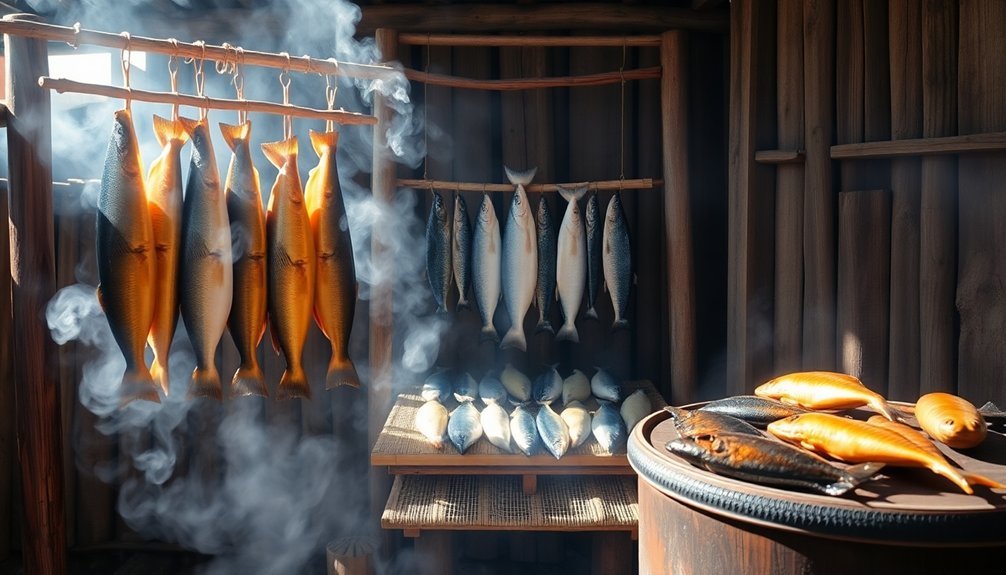
The practice of fish smoking traces its roots to the indigenous peoples of North America, who pioneered this preservation method alongside drying techniques.
You'll find that these early practitioners carefully selected specific woods for different types of food – using alder and fruitwoods for fish, while reserving hickory, oak, and mesquite for meats.
Across the globe, ancient civilizations discovered similar methods independently.
This combination of smoking and drying helped communities survive during times of scarcity and harsh winters.
In Australia, the Gunditjmara peoples developed their own unique approach, smoking eels in hollow logs to feed their communities year-round. This practice was intimately connected to their sophisticated fish trap systems and helped guarantee a steady protein supply.
The technique spread worldwide as cultures recognized smoking's dual benefits of preservation and flavor enhancement.
You'll notice this particularly in how the Greeks and Romans incorporated smoked salmon into their festivities.
The process of pyrolysis – burning wood to produce smoke – became fundamental to food preservation across civilizations.
What began as a practical method to transport fish inland evolved into a sophisticated culinary practice, with each culture developing its own distinctive smoking techniques based on available resources and local preferences.
Northern European Smoking Methods
Northern Europe's time-honored cold smoking methods carry forward traditions that focus on enhancing flavors rather than just preserving fish.
You'll find that smoking temperatures are carefully controlled between 15-30°C, allowing the fish to develop complex tastes without cooking through. In Arbroath, Scotland, wet hemp cloth is used to trap heat and moisture during the smoking process.
The choice of wood plays a vital role in the process, with each region selecting specific varieties like beech and oak from whisky barrels to create their signature taste profiles.
Cold Smoking Heritage Techniques
Since ancient times, cold smoking has been woven into Northern Europe's cultural fabric, evolving from indigenous North American methods into a refined preservation technique. You'll find evidence of this practice dating back to seventh-century Poland, with widespread adoption throughout medieval Europe by the fourteenth century.
If you're following traditional cold smoking methods, you'll need to maintain temperatures between 10-16°C (50-60°F), never exceeding 30°C to preserve the fish's muscle texture. You'll start with 90% humidity, gradually reducing it to 70% for ideal drying, while using intermittent smoking periods to allow fresh air circulation. The process requires careful monitoring and balance in the smoking chamber to achieve optimal results.
You'll discover that wood choice greatly impacts your final product. Scandinavians traditionally use juniper branches and needles, while British smokers prefer oak and ash, with Scottish practitioners often incorporating peat. In Russia, you'll find alder, oak, poplar, and lime woods dominating the smoking process.
For safety, you'll need to guarantee a minimum 3.4% salt concentration and store your finished product at or below 3°C.
When properly prepared and stored, your cold-smoked fish can last between 21 to 49 days, though it's essential to remember that smoking alone won't preserve the fish without proper salting or drying.
Flavor Over Preservation Focus
While traditional smoking methods originally served as preservation techniques, modern Northern European fish smoking has evolved to prioritize flavor enhancement over long-term storage. You'll find that today's smoked fish still requires proper refrigeration or freezing, as the smoking process itself doesn't markedly extend shelf life.
When you explore Northern European smoking methods, you'll notice they focus on bringing out the natural flavors of fish like haddock and salmon. The process typically begins with brining or salting the fish, followed by smoking it with carefully selected woods such as beech and oak. These woods impart distinct flavors that complement rather than overpower the fish's natural taste.
You'll encounter two main smoking approaches: hot smoking at 70-80°C for shorter periods, and cold smoking at 28-32°C for longer durations. Traditional smokehouses still use natural wood fires, creating unique flavor profiles that mechanical smokers can't fully replicate.
While modern food safety standards require specific internal cooking temperatures (150°F for 30 minutes), the core techniques remain largely unchanged from historical practices. You'll find these methods are particularly valued in regions like Scandinavia and Scotland, where smoking traditions have been passed down through generations.
Regional Wood Selection Methods
The choice of wood lies at the heart of European fish smoking traditions, with each region developing distinct preferences based on local availability and desired flavor profiles.
You'll find oak dominating British smoking methods, with ash serving as a popular second choice. In Scotland, traditional smokers have historically used peat for domestic smoking, though they've now largely shifted to beech and oak, particularly in the production of famous Arbroath smokies.
If you're exploring Russian smoking traditions, you'll notice a broader range of woods being used, including alder, oak, poplar, and lime.
What's particularly interesting is how these regional choices reflect a common understanding of wood properties. You won't often find softwoods like pine or fir in professional smoking operations, as they impart an unwanted resinous flavor. Instead, hardwoods are preferred across Europe for their milder, more controlled flavor release and slower, more even breakdown during the smoking process.
The key to successful smoking lies in the wood's pyrolysis, where lower temperatures preserve more of the beneficial flavor compounds while avoiding the oxidation that occurs at higher temperatures.
Indigenous Australian Smoking Practices
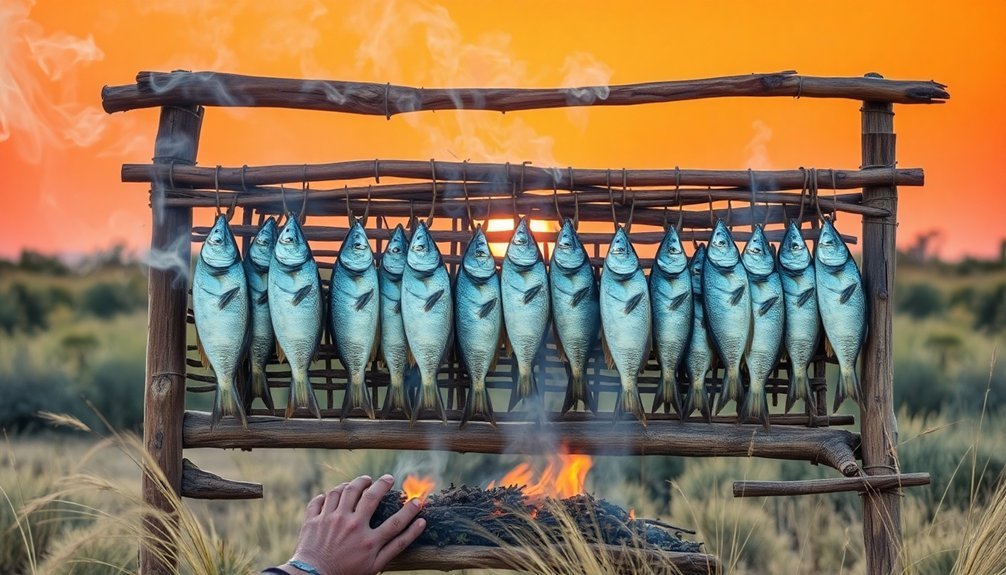
Indigenous Australians' time-honored fish smoking practices stretch back thousands of years, representing one of humanity's oldest food preservation methods. You'll find that their techniques weren't just about preservation – they were essential for feeding large communities and enabling trade between tribes throughout the year.
If you look at the Gunditjmara peoples of southwestern Victoria, you'll see how they mastered smoking eels in hollow logs near Lake Condah, home to one of Australia's oldest fish trap systems. They'd create smoke boxes and drying racks using local materials like driftwood, making the process a communal activity that brought entire communities together.
You'll notice they've always favored oily fish species, which retain moisture better during the smoking process. Their choice of native hardwoods wasn't random – these materials provided specific flavor profiles that enhanced the final product. You won't find them using softwoods or treated timbers, as these can release toxic residues.
Today, you can see how these traditional methods have influenced modern smoking practices. While contemporary techniques might include salt curing and pellicle formation, many Australian smokehouses still honor Indigenous practices by using native timbers and traditional smoking methods.
North American Regional Preferences
Across North America's diverse regions, you'll find distinct approaches to fish smoking that reflect local traditions and available resources. From the Pacific Northwest's preference for alder-smoked salmon to the Southern states' love for hickory-smoked mullet, each area has developed its own signature methods.
| Region | Preferred Fish | Common Wood Choice |
|---|---|---|
| Pacific Northwest | Salmon, Black Cod | Alder, Apple |
| Alaska | Salmon, Halibut | Alder, Maple |
| Great Lakes | Trout, Whitefish | Cherry, Maple |
| Southern States | Mullet, Bluefish | Hickory, Oak |
You'll notice that hot smoking dominates the North American scene, with temperatures reaching 160°F or higher. This method's popularity stems from its convenience and food safety benefits. Most regions follow a similar basic process: brining the fish for 6-12 hours in a mixture of kosher salt and brown sugar, then drying it to form a pellicle before smoking.
What sets each region apart is the combination of local fish varieties and wood choices. While you might find maple-smoked trout around the Great Lakes, coastal areas often pair their abundant salmon with mild alder wood. Many smokers enhance flavors by basting with honey or maple syrup during the smoking process.
Traditional Smokehouse Construction
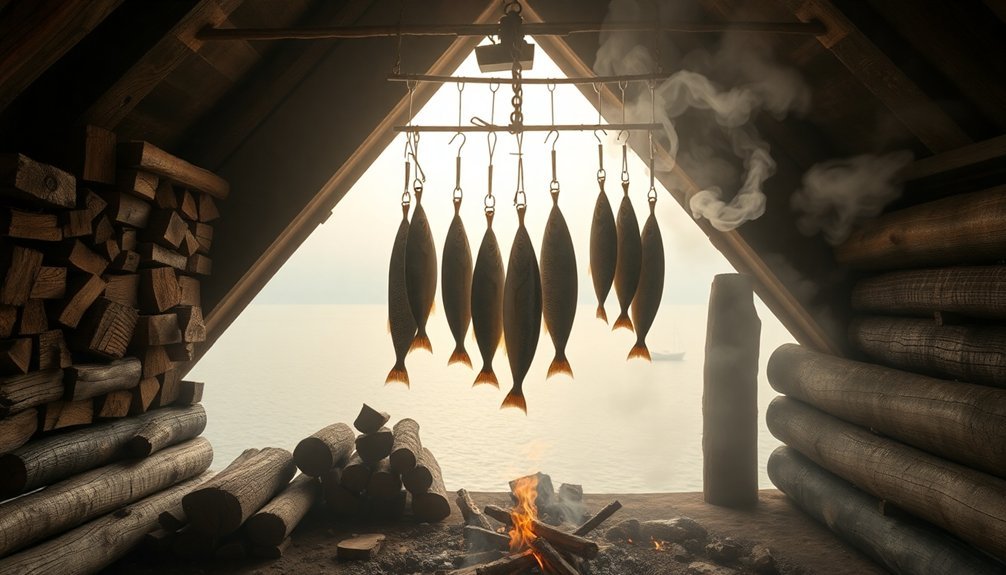
While regional smoking methods vary across North America, successful fish smoking has always depended on proper facility design and construction.
Traditional smokehouses, which you'll often find attached to fishermen's cottages in historic fishing villages, were built to serve both as smoking facilities and storage units.
You'll notice these structures typically follow a square or rectangular design, constructed from brick or stone to maintain heat effectively.
They're engineered around the principle of natural convection, where smoke rises through carefully positioned channels from an external fire pit.
You'll find screened openings strategically placed to control airflow, with hinged covers that let you adjust smoke escape as needed.
When you're smoking fish in these traditional structures, you'll suspend your catch over slowly smouldering wood.
Without modern mechanical controls, you'll rely on artisanal techniques, letting the fish absorb smoke overnight or for several days.
The design guarantees even smoke distribution through gravity-driven convection, while the building's materials provide the durability needed for long-term use.
Though simple in concept, these traditional smokehouses reflect generations of practical knowledge in fish preservation.
Wood Types and Flavors
You'll find dramatic differences in wood choices across the globe, from New Zealand's beloved manuka to Europe's traditional oak and America's preference for fruit woods like apple and cherry.
Each region's wood selection directly impacts the final flavor of smoked fish, with some cultures favoring bold, rich profiles while others opt for subtle, nuanced tastes.
These regional preferences aren't random but often stem from locally available wood types and centuries-old smoking traditions that have proven most effective for local fish species.
Regional Wood Preferences
Throughout different corners of the world, fish-smoking traditions have evolved around locally available wood types, each contributing distinct flavors and characteristics to the final product. You'll find mangrove wood dominating Cameroon's fish smoking industry, where it's prized for its consistent heat output despite growing conservation concerns. In North America and Europe, you'll discover a diverse selection of smoking woods, from mild alder to robust hickory.
| Region | Primary Woods | Key Characteristics |
|---|---|---|
| Africa | Mangrove | High heat energy, constant supply |
| North America | Cedar, Hickory | Low resin, strong smoky flavor |
| Asia | Coconut trunk | High organoleptic scores |
| Europe | Alder, Apple | Mild flavor, sweet aroma |
| Others | Oak, Cherry | Deep flavor, sweet notes |
In Asia, you'll notice a preference for coconut trunk wood, particularly in Indonesia, where it's valued for superior taste and appearance scores. Local hardwoods are favored over softwoods to avoid unwanted compounds in the final product. While the Congo relies on various local woods, contributing to deforestation concerns, other regions utilize distinctive options like Ti Tree wood, which adds moderate aromatic notes when used sparingly.
Flavor Profile Differences
Since different wood types impact the final taste of smoked fish dramatically, understanding their unique flavor profiles is essential for achieving desired results.
You'll find that hickory delivers a bold, smoky profile that's perfect for robust fish like tuna and mackerel, though you'll need to use it carefully to avoid overpowering your fish.
If you're smoking delicate fish varieties, you'll want to take into account fruit woods.
Apple, cherry, and maple each bring their own subtle sweetness to the mix.
Applewood offers a mild, fruity note, while cherry wood creates a sweet, full-bodied flavor.
Maple wood will give your fish a gentle sweetness reminiscent of caramelized sugar.
For a reliable, all-purpose smoking wood, you can't go wrong with alder.
It's particularly popular in the Pacific Northwest, where it's used for both fresh and saltwater fish.
You'll get a light, delicate smoke that enhances rather than masks your fish's natural flavors.
While oak, mesquite, and pecan aren't traditionally used for fish smoking, you can experiment with them in small quantities or blends to create unique flavor combinations.
Traditional Smoking Materials
Speaking of wood types, the history of traditional smoking materials spans cultures and continents, each region developing its own preferences based on local resources.
You'll find that North Americans have traditionally relied on hickory, oak, and mesquite, while Europeans, particularly in Scandinavia, prefer alder and fruitwoods for their fish smoking needs.
When you're choosing wood for smoking fish, you'll want to take into account these popular options and their distinct characteristics:
- Cedar wood delivers intense resin flavors, making it ideal for indirect heating methods.
- Alder wood provides a mild, balanced taste perfect for longer smoking sessions.
- Apple wood creates a sweet, fruity profile that won't overpower delicate fish.
- Hickory wood offers a strong, distinctive smokiness that should be used sparingly.
- Mesquite wood imparts an earthy, robust flavor that requires careful moderation.
The wood you select can dramatically affect your final product.
In Southeast Asia, you'll notice a shift toward modern kiln technologies like FTT, though traditional woods and sawdust remain popular.
Meanwhile, specialty woods like Ti Tree and cherry are gaining popularity globally for their unique flavor contributions to smoked fish.
Cold Versus Hot Smoking
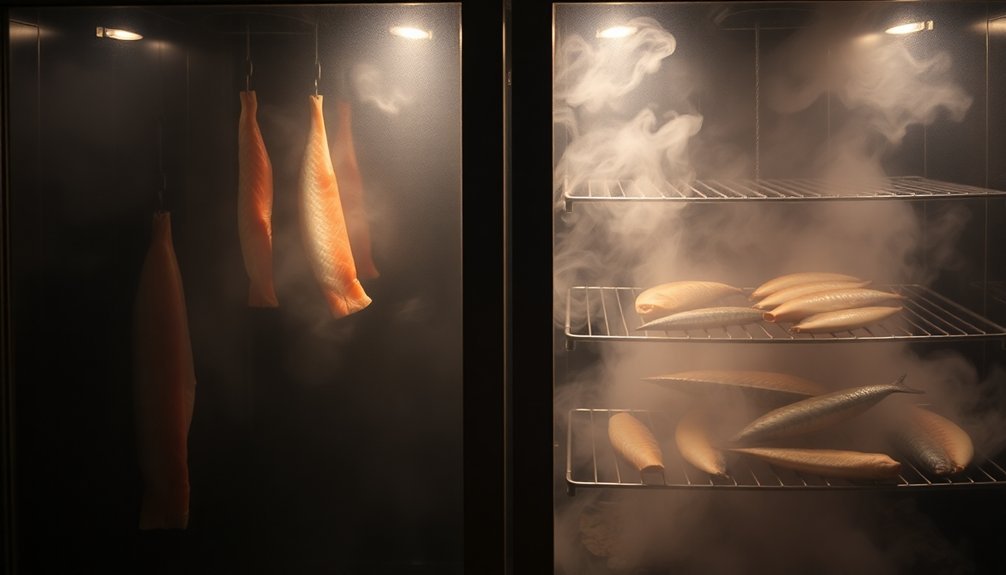
Two distinct methods dominate fish smoking worldwide: cold smoking and hot smoking.
You'll find cold smoking operates at temperatures below 80°F, focusing on flavor development and preservation without cooking the fish. This method requires careful preparation, including salt-curing and forming a pellicle before the 12-24 hour smoking process.
Hot smoking takes a different approach, cooking and flavoring your fish simultaneously at temperatures starting around 100°F. You won't need to form a pellicle, and the process is quicker, typically completing in 5-6 hours. The result is a flaky texture, unlike cold smoking's creamy finish.
You'll need to evaluate your fish type when choosing between methods. Cold smoking works best with fatty fish like salmon and kingfish, while hot smoking accommodates a broader range of species.
If you're concerned about parasites, hot smoking naturally eliminates them through high temperatures, but cold smoking requires additional safety steps like using cure #1 or pre-freezing.
Your equipment will differ too – cold smoking relies on smoke generators without direct heat, while hot smoking uses traditional smokers with heat sources.
Ancient Preservation Techniques
Modern smoking methods evolved from practices dating back to the Stone Age, when our ancestors made a remarkable discovery near their fishing grounds. They found that exposing fish to smoke from smoldering organic materials not only enhanced its flavor but also greatly extended its storage life. This discovery proved essential during times when fishing wasn't possible.
The preservation process worked through multiple mechanisms that you'll still recognize in today's smoking techniques:
- Smoke created an acidic coating that prevented oxidation
- Low temperatures and indirect heat preserved the fish's texture
- Dehydration made the environment hostile for bacteria
- Salt curing strengthened the preservation effect
- Controlled ventilation guaranteed proper smoke distribution
In Medieval England, communities developed sophisticated smoking structures with separate fire pits and tall towers. You'll find that these early smokehouses weren't just buildings – they were carefully engineered to control temperature and smoke flow.
The process typically involved salt curing followed by up to two weeks of smoking. Different regions worldwide adapted these basic principles to create unique variations, using local woods and developing distinct curing times that suited their climate and preferences.
Maritime Cultural Smoking Traditions
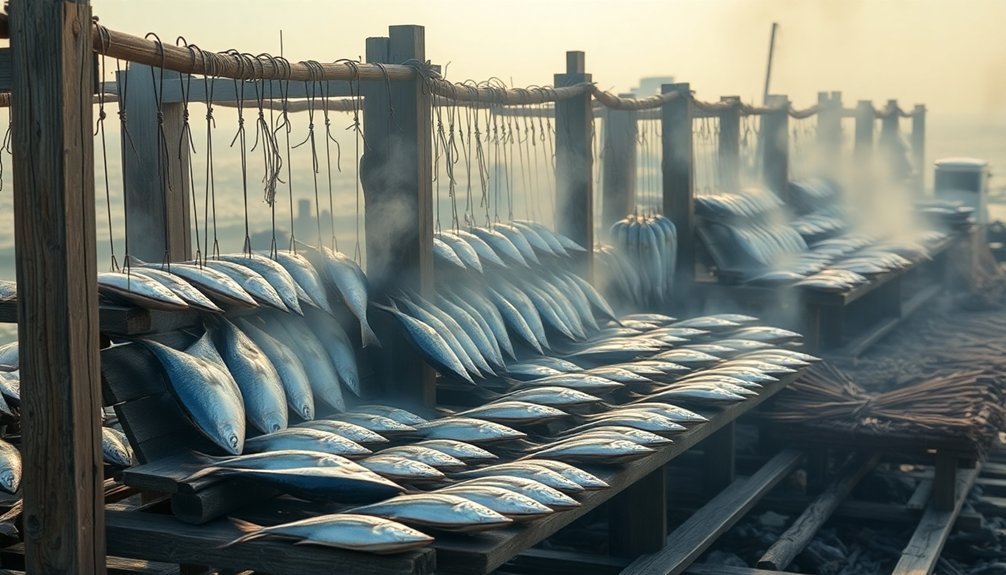
Countless maritime communities worldwide have developed distinct fish smoking traditions that reflect their cultural heritage and local resources.
In Southeast Alaska, you'll find the Lingít people smoking salmon in open-sided smokehouses using alder wood, a practice they've maintained for thousands of years. Their traditional knowledge has been carefully passed down through generations, with winter being the preferred smoking season in Petersburg.
If you visit Cameroon's coastal regions, you'll discover different smoking methods centered around Bifaka (smoked fish). These communities have adapted their practices to protect local mangroves, switching to alternative firewood sources and more efficient stoves. During lean fishing seasons, this preservation method becomes essential for both food security and economic stability.
The wood choice greatly impacts the final product's flavor. While Alaskan smokers prefer alder wood, other regions opt for hardwoods like maple, oak, or hickory.
Before smoking begins, you'll need to properly cure the fish in salt for 20-24 hours, allowing proper penetration. Each region's smoking methods are uniquely tailored to local fish species, ensuring ideal preservation while maintaining distinct cultural flavors.
Modern Smoking Technologies
You'll find that today's computer-controlled smoking systems offer precise temperature regulation and automated monitoring throughout the entire smoking process.
These advanced systems can reduce traditional smoking times from days to mere hours while maintaining consistent quality across batches.
Modern smoke condensate production methods have revolutionized commercial fish smoking by allowing processors to apply concentrated smoke flavoring in controlled amounts, ensuring product safety and uniformity.
Computer-Controlled Smoking Systems
As technology continues to revolutionize traditional industries, computer-controlled smoking systems have transformed fish preservation methods worldwide. You'll find sophisticated microcontrollers like Arduino managing precise temperature controls through PID systems, guaranteeing ideal smoking conditions between 60°C to 70°C.
These automated systems work alongside renewable energy solutions, dramatically reducing processing time from 6 days to just 60 minutes. The integration of solar collectors and automated controls has revolutionized traditional smoking methods.
You're now able to monitor and adjust every aspect of the process through digital interfaces, while stepper motors and driven pulleys handle the mechanical work. Here's what makes these systems particularly effective:
- Temperature sensors maintain exact heat levels for consistent results
- Relay modules and DC converters manage power distribution efficiently
- Automated tray movement systems process up to 5 kg per batch
- Solar energy integration reduces wood consumption and carbon emissions
- Exhaust fans and blowers guarantee ideal smoke circulation
Smoke Condensate Production Methods
Modern smoke condensate production stands at the forefront of technological advancement in fish smoking, building on the precision offered by computer-controlled systems.
You'll find that this innovative process captures and condenses smoke from wood combustion, allowing for controlled application of smoke flavor without traditional smokehouses.
When you're using smoke condensate in mechanical kilns, you can greatly reduce smoking time while maintaining consistent flavor profiles.
You'll appreciate that the condensate can be dissolved in solvents for direct application to fish, making mass production more efficient and reliable.
You can guarantee better safety standards by sourcing condensate from approved suppliers, as this helps reduce PAH contamination in your final product.
The process becomes even more sophisticated when you incorporate electrostatic smoking techniques, where smoke particles receive a positive charge and fish surfaces a negative charge, enhancing smoke deposition efficiency.
You'll need to take into account various factors when implementing these methods, including the fish's skin thickness, scale presence, and fat content.
While electrostatic fields require careful safety protocols, they offer unprecedented control over the smoking process and help modify smoke compound ratios for ideal results.
Frequently Asked Questions
How Does Altitude Affect the Fish Smoking Process and Final Taste?
At higher altitudes, you'll find your fish takes longer to smoke due to lower atmospheric pressure. You'll need to adjust cooking times and monitor moisture carefully to avoid drying, which affects the final taste.
Can Smoked Fish Be Safely Consumed During Pregnancy?
You can safely eat hot-smoked fish during pregnancy, but avoid cold-smoked varieties unless thoroughly cooked. Stick to canned smoked fish and make certain it's heated properly to prevent listeria contamination.
What Role Does Fish Size Play in Determining Smoking Duration?
You'll need to smoke larger fish longer, as they require more time to reach the safe internal temperature of 160°F. Smaller fish smoke faster, but all sizes must maintain proper temperature for food safety.
How Do Seasonal Weather Changes Impact Outdoor Fish Smoking Methods?
You'll need to adjust your smoking times and temperatures as seasons change. Cold weather slows down the process, while hot weather speeds it up. You must monitor humidity levels and modify your setup accordingly.
Which Fish Species Are Considered Unsuitable for Smoking and Why?
You shouldn't smoke fish with high microbial loads, natural toxins, or parasitic risks. Fish that aren't properly gutted or stored above 10°C are especially dangerous, as they can cause serious foodborne illnesses.
In Summary
You'll find that fish smoking traditions reflect the unique cultural heritage, available resources, and climate of each region. Whether you're exploring Northern Europe's oak-smoked salmon or discovering Indigenous Australian methods, you're witnessing centuries of preservation wisdom. Today's smoking techniques blend time-tested practices with modern innovation, but you're still tasting the same fundamental process that's kept communities fed for generations.
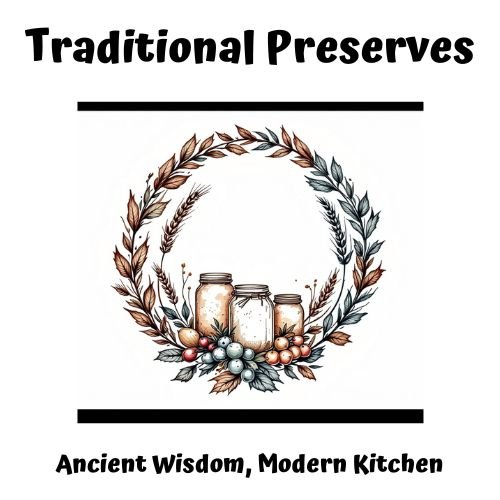

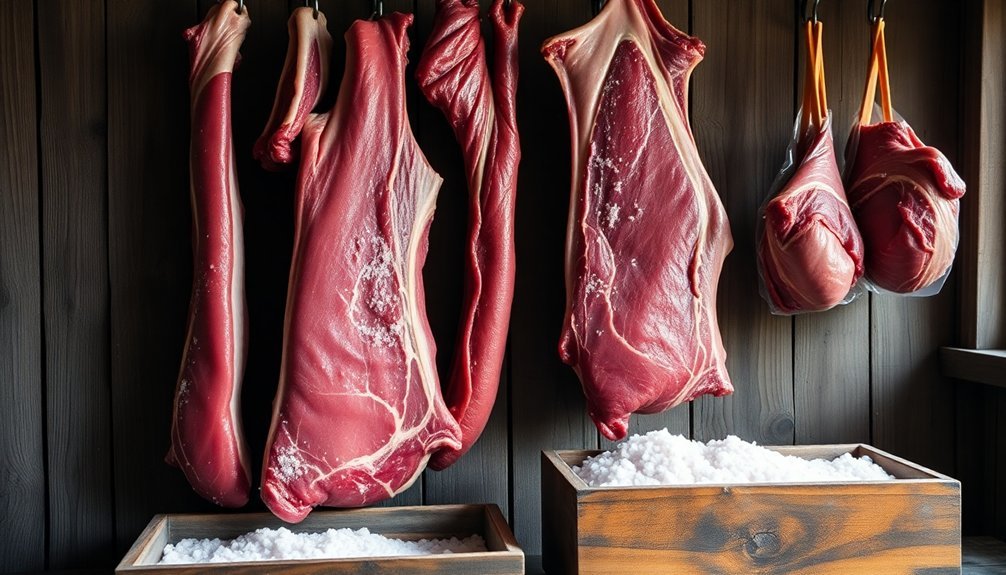
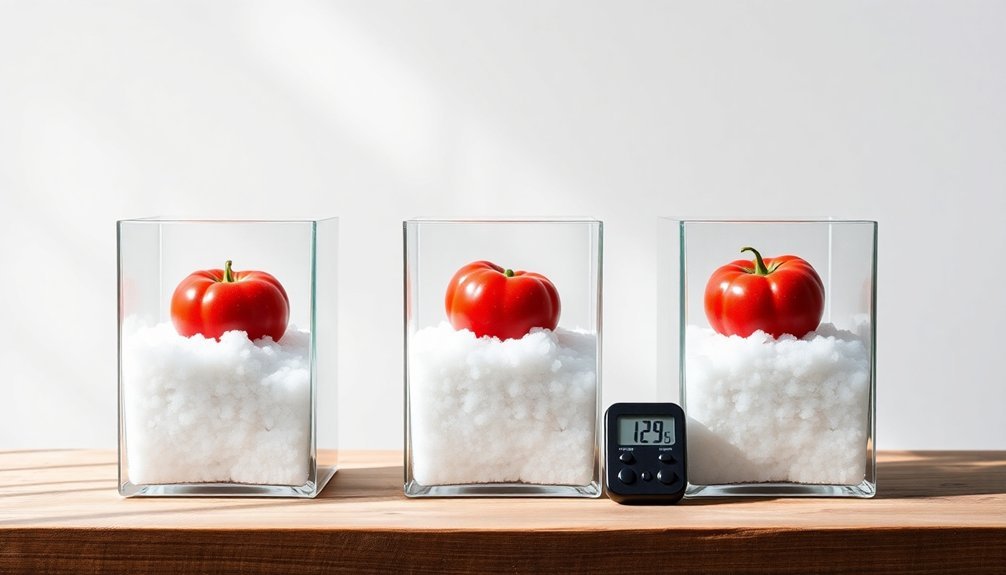
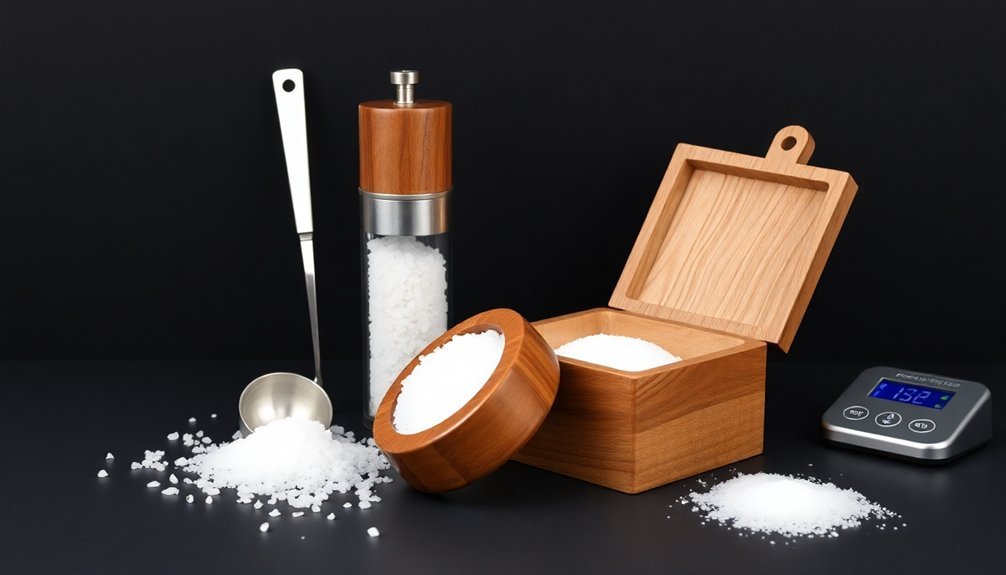
Leave a Reply